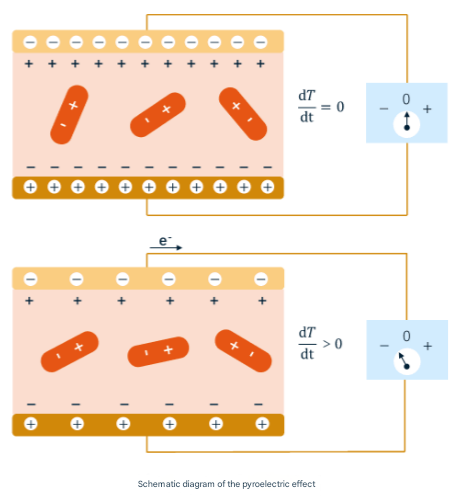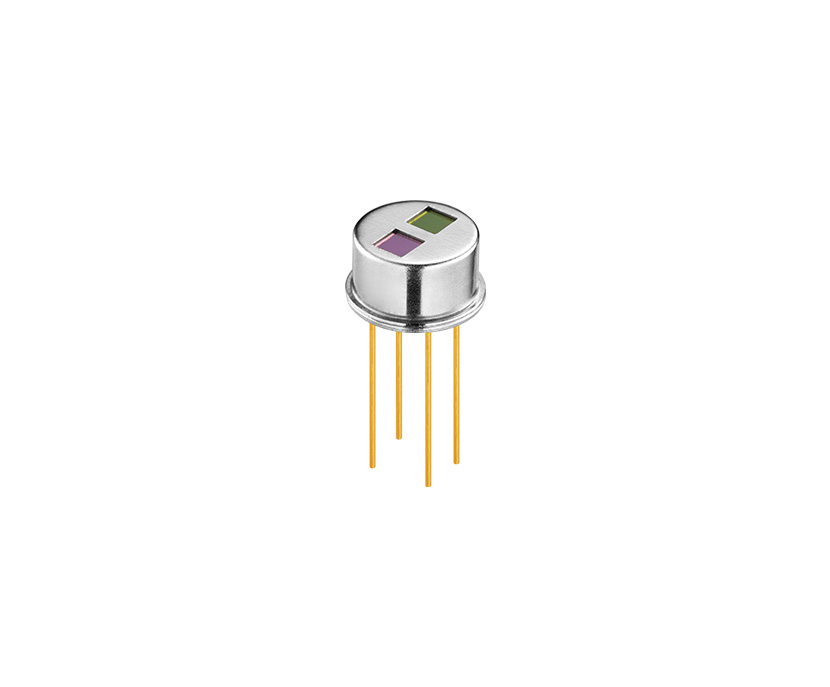
1. The importance of gas detection
In industrial production, real-time monitoring of toxic gas leaks can prevent explosions and poisoning accidents; in medical environments, accurate detection of anesthetic gas concentrations is the key to ensuring surgical safety; in home scenarios, gas leak alarms can avoid fire and poisoning risks through sensitive alarm functions. Gas detection technology has become an core link in protecting life safety, improving production efficiency and quality of life through real-time data collection and intelligent analysis.
2. Infrared pyroelectric technology
The pyroelectric effect has been known for a long time (discovered by Theophrastos of Eresos in the 4th century BC). The name "pyroelectric" as it is known today was first used in 1824 by Scottish physicist David Brewster (1781-1868), who also named the famous Brewster angle in optics.
The widespread application of the pyroelectric effect in sensor technology began in 1970. Today, pyroelectric detectors have become popular thermal infrared detectors due to their simple structure, durability and excellent performance.
Working principle of pyroelectric detector:
Light-to-heat conversion, that is, from infrared radiation change to temperature change.
Thermo-electric conversion, that is, from temperature change to charge generation.
The charge is converted into current or voltage through the application circuit, which is the output signal of the detector.

3. MPY20-A122T Pyroelectric Gas Sensor

The MPY20-A122T series pyroelectric gas sensor of MFrontier uses lithium tantalate single crystal as the sensitive element material. The Curie temperature of lithium tantalate crystal material is above 600°C, the relative dielectric constant is small, and the specific detection rate is high. In a wide range of room temperature, the pyroelectric coefficient of the material changes little with temperature, and the temperature change rate of the output signal is only 1~2%. The sensor has very good temperature stability and good spectral response consistency in the wavelength range of 1~20μm.
Product Features
Fast signal response
Wide detection range
Low noise
High response rate
High stability
4. Technical Parameters Overview
| Detection gas type | CO/CO2/CH4/N2O/SF6/anesthetic gas... |
Technology type | Pyroelectric |
Channel | Dual channel |
Package type | TO-39 |
Mode | Current mode |
Window size | 2.5×2.5 mm2 |
Sensor size | 1.6×1.6 mm2 |
Thermal time constant | 150 ms |
Feedback resistance | 100 GΩ |
Recommended voltage | 2~5V |
Voltage response rate (no window) Rv(500K,10Hz,25℃) | ≥45000V/W |
Noise density (10Hz,BW1Hz,25℃) | ≤35μV/Hz1/2 |
Specific detection rate (no window) (D*500K,10HzBW1Hz,25℃) | 4.0×10E8 cm·Hz1/2/W |
Optimum output load | 470kΩ |
Working/storage temperature | -40~85℃ |
5. Application of pyroelectric gas sensors
· Industrial production: real-time monitoring of toxic gas concentration in chemical workshops to prevent leakage accidents;
· Medical health: precise control of anesthetic gas ratio to ensure surgical safety;
· Public safety: CO₂ concentration monitoring in confined spaces such as subways and tunnels, and linkage ventilation systems;
· Environmental monitoring: analysis of pollutants such as NO₂ and SO₂ in the atmosphere to support environmental protection decisions;
· Home electronics: core components of gas leak alarms to protect family safety.
With mature production processes and full-process technical support, MFrontier provides full-cycle services for MPY20-A122T from selection consultation to mass production. Whether it is equipment manufacturers improving product performance or system integrators building gas monitoring platforms, MPY20-A122T pyroelectric sensors are the ideal choice for "high precision and high reliability".
Share